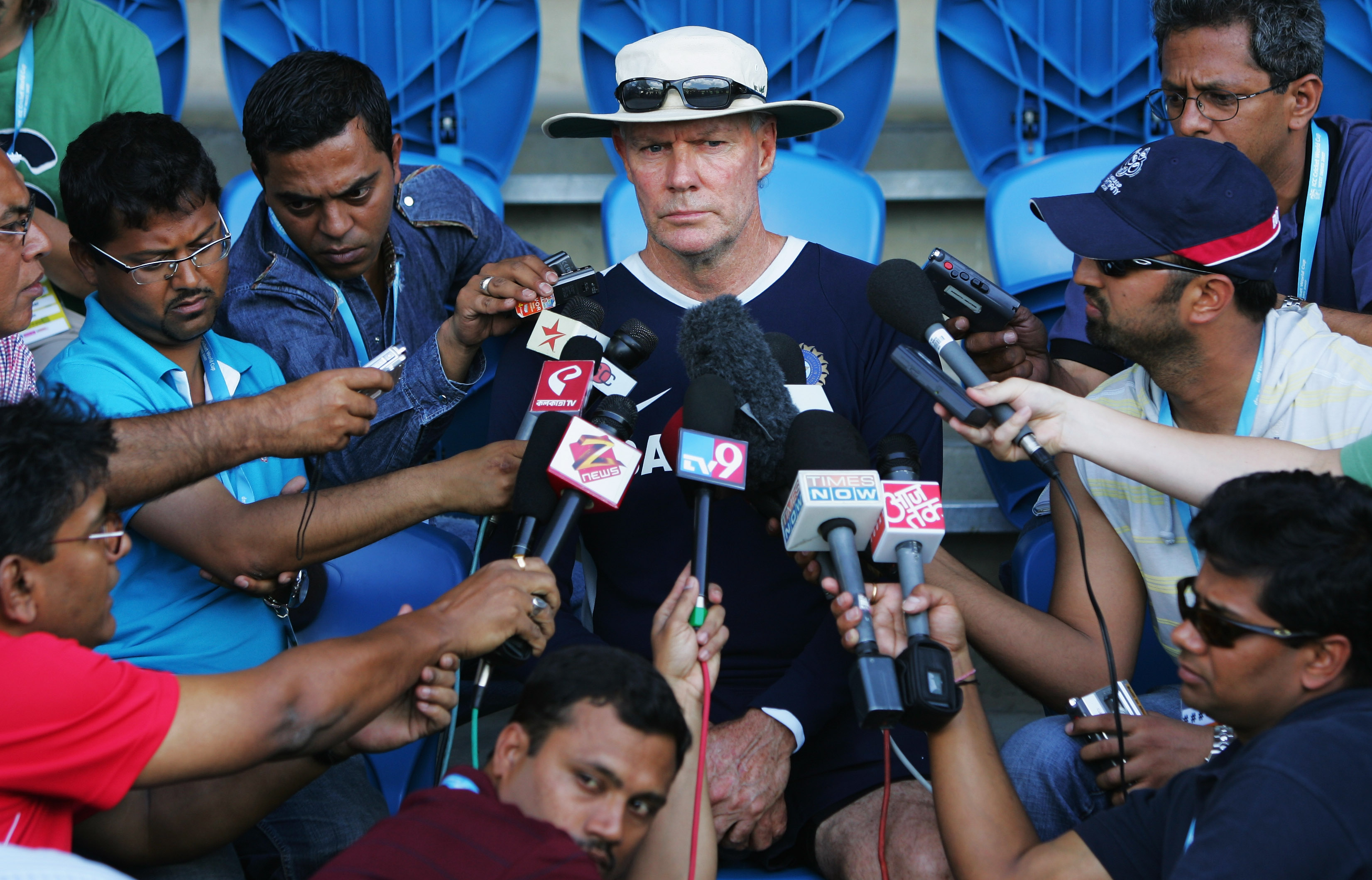Why BCCI's dramatic head coach selection process is nothing but a farce
The selection process for the Indian cricket team's head coach has grabbed a lot of headlines in the media recently. 57 applications, people announcing their candidacy, eminent former cricketers being brought in to interview them—the procedure has been dramatic. However, is it worth all this drama?

India prides itself on how they honour and respect the teachers in their society, and the Dronacharya Award exemplifies that. However, since it was first awarded to PT Usha's coach OM Nambiar in 1985, only four cricket coaches have won this award. The last of which was back in 2004, when Sunita Sharma, India's first woman cricket coach, won it for her tireless contributions.
Interestingly, none of the Indian national cricket team coaches have won the award yet, and that is unlikely to change anytime soon. Unlike football, the role of coaches is very confined—especially when it comes to the senior team. In Indian cricket, the selectors and the captain sit at the top of the pyramid. In fact, earlier there were team managers, instead of head coaches, who used to travel with the team overseas during the tours.
The actual coaching usually takes place at the grassroots level. By the time a player reaches the senior national team, their fundamentals are already in place. A head coach might point out technical issues a player might have in his game, but very few can make drastic changes to the way they bat/ball at that stage of their careers.
The biggest, and perhaps the toughest, responsibility a senior team coach usually has is that of man management, and the Greg Chappell fiasco has shown exactly how ugly things can get if it is done wrong.
The fiery Australian's, who had courted controversy even during his playing days,
What followed Chappell's appointment had been labeled as the 'darkest phase' by veteran pacer Zaheer Khan. Chappell's dominant personality clashed with that of Sourav Ganguly, and that ensued one of the most publicized infighting in the Indian cricket team's history. The outcome of this fight did not matter in the end, as it was the Indian team which suffered the most. It led to a disastrous campaign in the 2007 World Cup, after reaching the final just four years before that.
After Chappell's departure, a host of players came out and criticized the Australian for imposing his ideals on others. Sachin Tendulkar called him a 'ringmaster' in his autobiography, Zaheer said Chappell was 'control freak', while Laxman said that he took Indian cricket 'backwards'.
It took India a long time to recover from that debacle. The BCCI had grasped their lesson as well from that
The Indian cricket team's dressing room has often been a collection of a lot of big egos, and it has been the coach who has had to act as the melting pot. However, the current Indian team does not have too many big egos, like it did back during the time of Chappell. It is still a very young team, and apart from Virat Kohli and MS Dhoni, there will not be too many big personalities in the dressing room for the coach to handle.
That brings us to the point: does India really need a head coach?
A few days ago, former cricketer Sanjay Manjrekar tweeted, “Selectors are far more influential people when it comes to Indian cricket & it's fortunes. Never understood this fuss around the coach. R.S Dungarpur in 1990 changed the course of Ind cricket when he made Azhar capt & dropped....senior players. He was a selector, not coach”. And he is not wrong.
India
The senior team's head coach role in the Indian team is almost similar to the role the Indian President has in Indian politics: Big status, but almost irrelevant. In fact, separate batting and bowling coaches to guide the youngsters in the team makes more sense.
Selectors are far more influential people when it comes to Indian cricket & it's fortunes. Never understood this fuss around the coach. R.S Dungarpur in 1990 changed the course of Ind cricket when he made Azhar capt & dropped....senior players. He was a selector, not coach”.
The consensus in the dressing room is that they want Ravi Shastri back with the team. The players were comfortable with him, and he acted more as a motivator than anything else, and that is what the team needs the most. If Shastri is selected as the head coach, which he is reportedly favourite to be, he will not all of a sudden make Suresh Raina a better player of short deliveries, or Shikhar Dhawan to improve his footwork. However, he can help them clear their mind and motivate them when they are down. At the highest level, success and failure
But, Shastri was already doing these things as the Team Director, and his reappointment, with a different tag, will only highlight the farce of this elaborate selection process by the BCCI.
This whole process—57 applications, host of criteria, Sachin, Sourav, and Laxman interviewing the candidates—has been played out like a soap opera, and the media has been lapping it up. Whereas, the far more important question that we should be concerned about is, who will replace Sandeep Patil as the chairman of the selection committee once he leaves in September?
Also read: Who will win the race for the India coach’s post?
These Indian kids can create footballing history, but they need your help. You can help Slum Soccer send 20 of our most talented footballers to represent INDIA at th Homeless World Cup at Glasgow. Click here to know more.

Comments
Sign up or log in to your account to leave comments and reactions
0 Comments